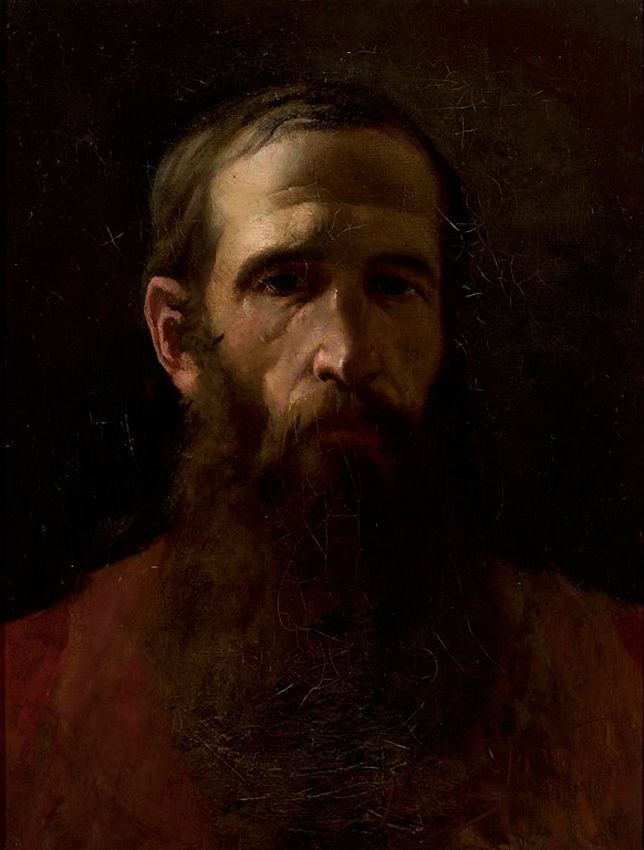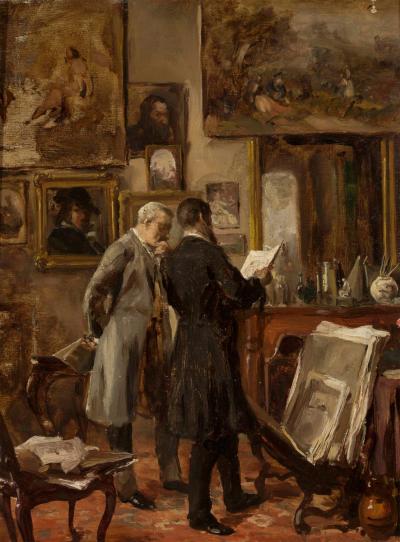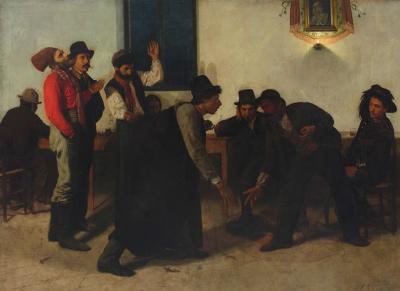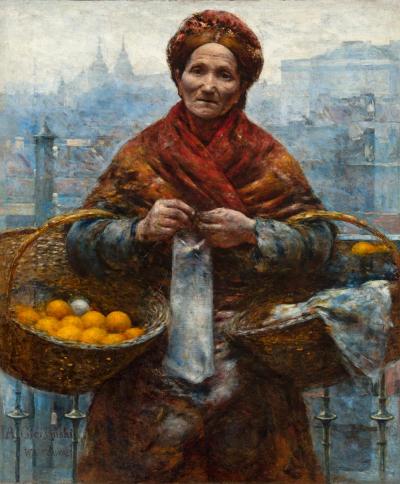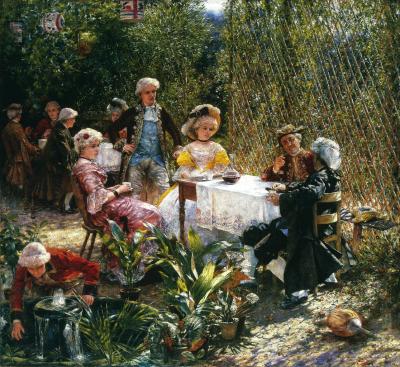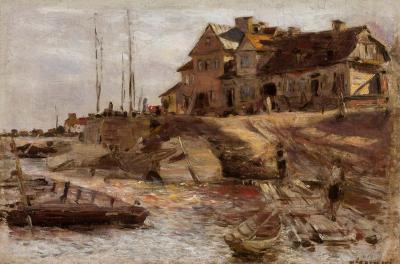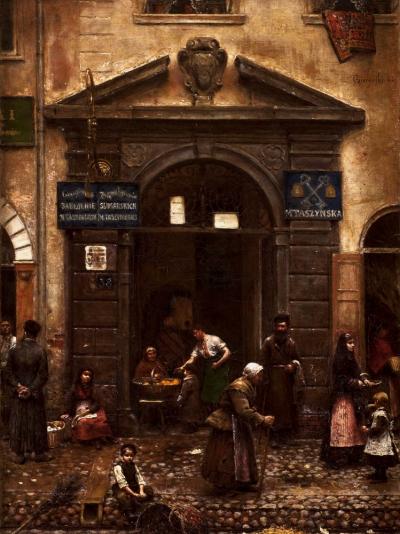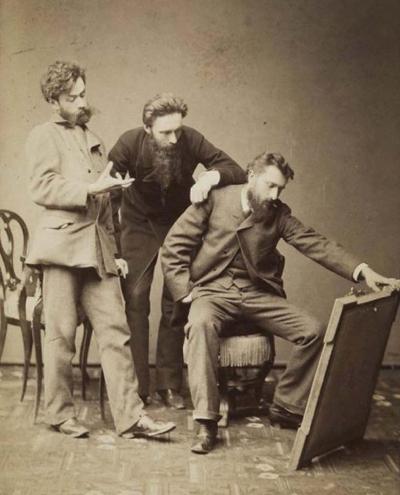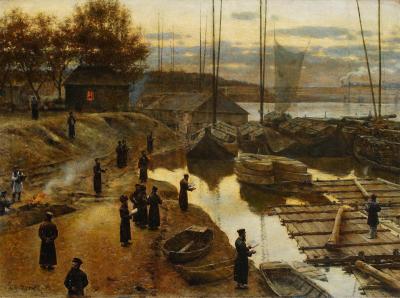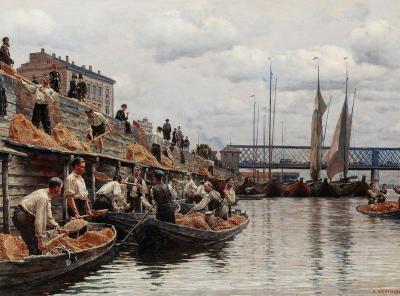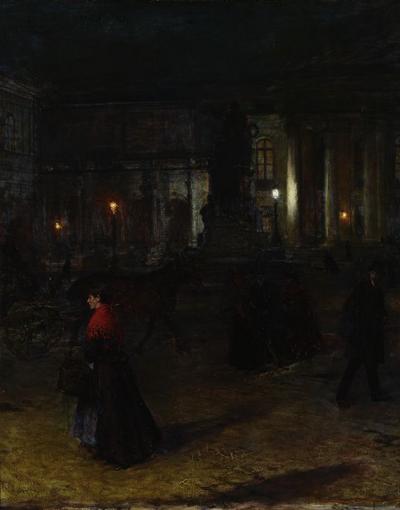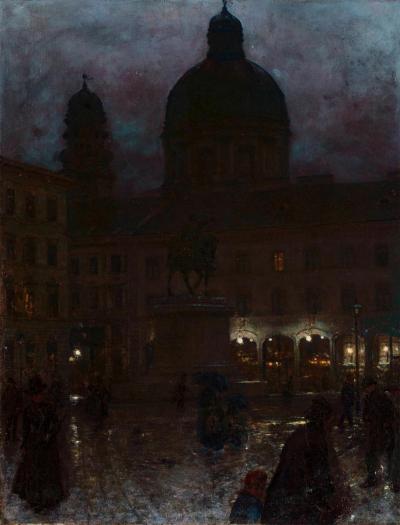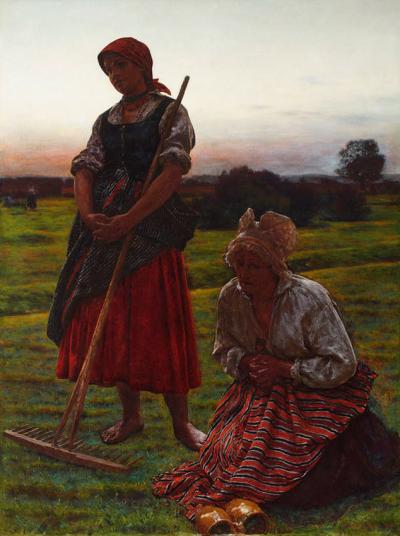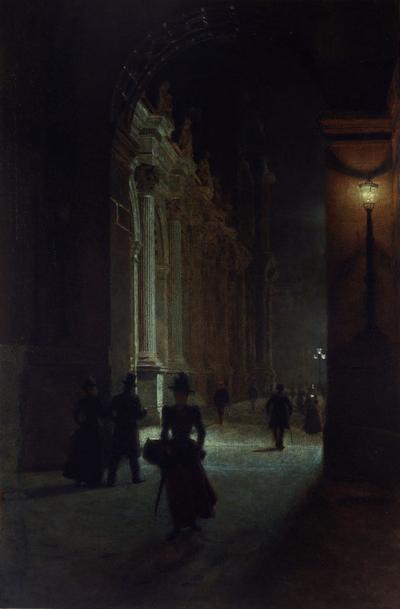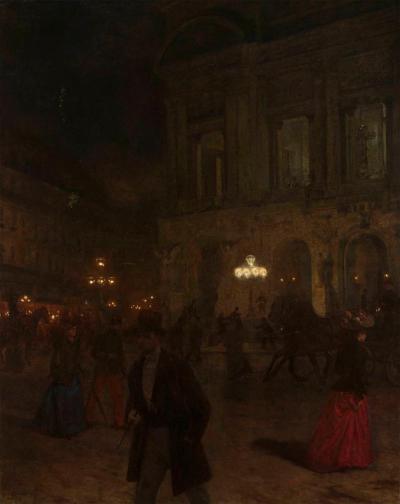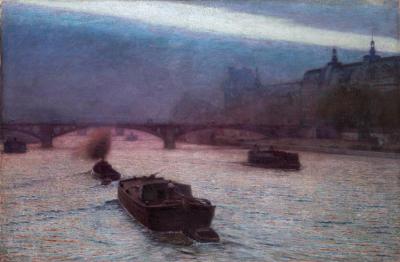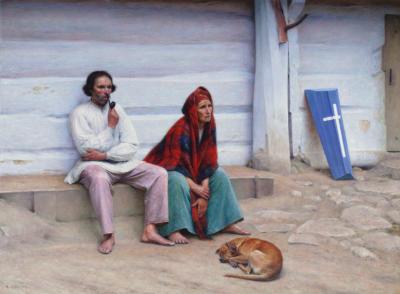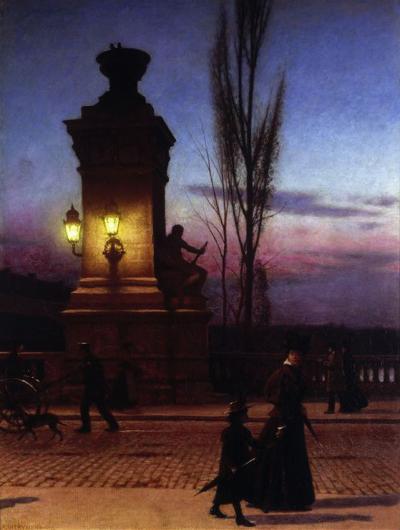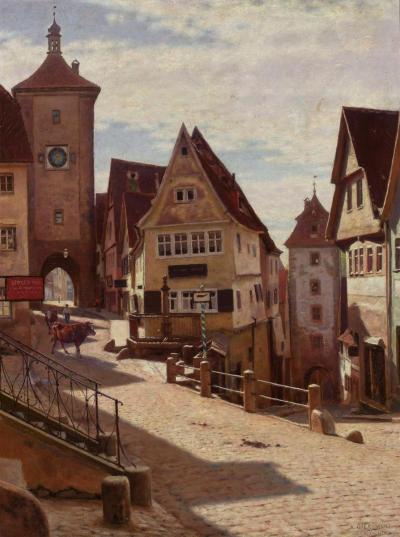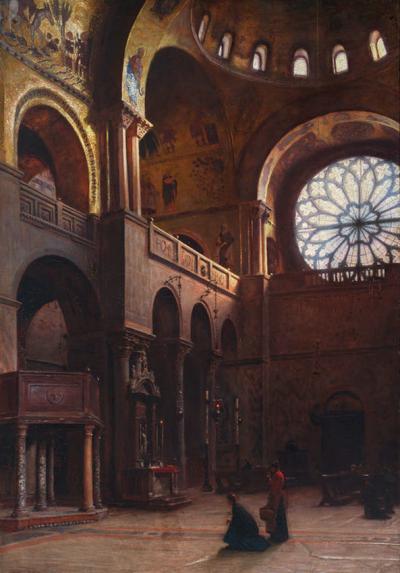Aleksander Gierymski
Mediathek Sorted

Aleksander Gierymski travelled on several occasions to Warsaw during his time in Rome, and finally moved back home in spring 1880. Here he completed a painting in 1882 entitled In the Gazebo (Ill. 4). Since 1875 he had been working on a series of detailed studies for the painting in Italy, in which he had tried out arrangements and individual details from nature; above all he was trying to analyse light reflections and the phenomena of colours in the utterly Impressionist oil painting that eventually emerged. This painting remained an exception in Gierymski’s work for a long time, not only on account of its style but also because of the rococo costumes in which his protagonists were attired, as in a scene from a play. This is the sole occasion in which he followed his brother Maksymilian, who had previously become famous in Munich for his scenes of horsemen in 18th-century costume.
But in the long run the elegant genre of costume pictures in the style of the Renaissance and rococo failed to have any lasting attraction for Gierymski. Instead he turned to the style and content of Realism during his time in Warsaw. This had been propagated by the painter Stanisław Witkiewicz (1851-1915) and the literature, music and theatre critic Antoni Sygietyński (1850-1923) in the Warsaw geographic weekly Wędrowiec (engl. Wanderer). Both men had become acquainted with Gierymski many years before during a long stay in Warsaw (Ill. 7). Now his illustrations began to be published in this periodical. Gierymski mainly concentrated on urban landscapes from the poor quarters of Warsaw, the old city, Powiśle and Solec (Ill. 5, 6). They had an effect that was similar to picture reportages enlivened with everyday scenes. He pinned down portraits of simple folk like the Jewish Woman with Oranges (Ill. 3), religious rituals like the Jewish Trombone Party (Ill. 8) and working situations like the Sand Dredgers on the banks of the Vistula (Ill. 9) with precise observation devoid of any dramatic effects. In 1884 he set out for Vienna to search for a cure to a neurosis (that finally led to mental derangement at the end of his life), and also spent time painting on the Belgian North Sea coast during health cures. In 1885 he returned to Italy once more where he lived for periods in Padua, Venice, Florence and Rome.
In 1888 Gierymski returned once more to Munich, where he stayed until 1890. Nonetheless he returned to the Bavarian capital on two occasions in 1895 and 1997. From there he occasionally travelled to study open air painting in Schleißheim, in the Bavarian Alps, Kufstein and Rattenberg in the Tyrol. Here he changed his painting style once again. In his early years he had been interested in the effects of light in painting, and now he concentrated on night-time views. By contrast with Warsaw he now concentrated on the representative quarters of Munich, Max-Joseph-Platz and Wittelsbacher Platz (Ill. 10, 11), both of which were situated not far from the Munich Residenz to the west and south of the Hofgarten; and the pylons and statues lining the Ludwigsbrücke (engl. Ludwigs Bridge), over the Isar (Ill. 17) that had been modernised in 1890/91. Now the people in his paintings tend to be rather elegant even when everyday motifs like a cart full of men with dogs also occur. His painting style is naturalistic and he attempts to catch light effects by using fine particles of colour as faithful to nature as possible. Thus Gierymski followed the contemporary upper middle-class tastes of the period both stylistically and in his motifs, when we think, say, of the simultaneous Berlin night-time views by Lesser Ury (Unter den Linden after the Rain, 1888) or the highly popular “Moonshine” paintings of the time.

















































































